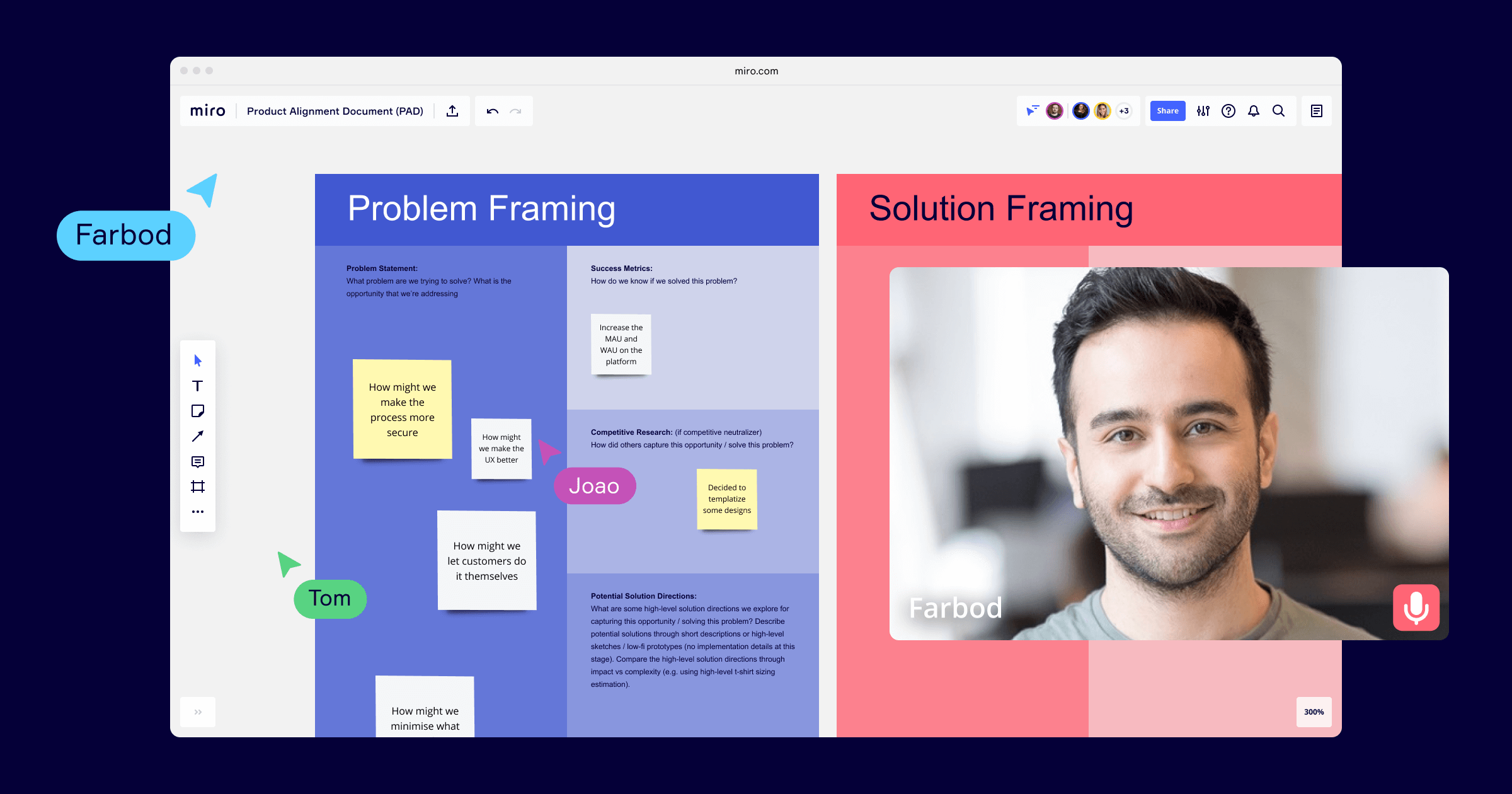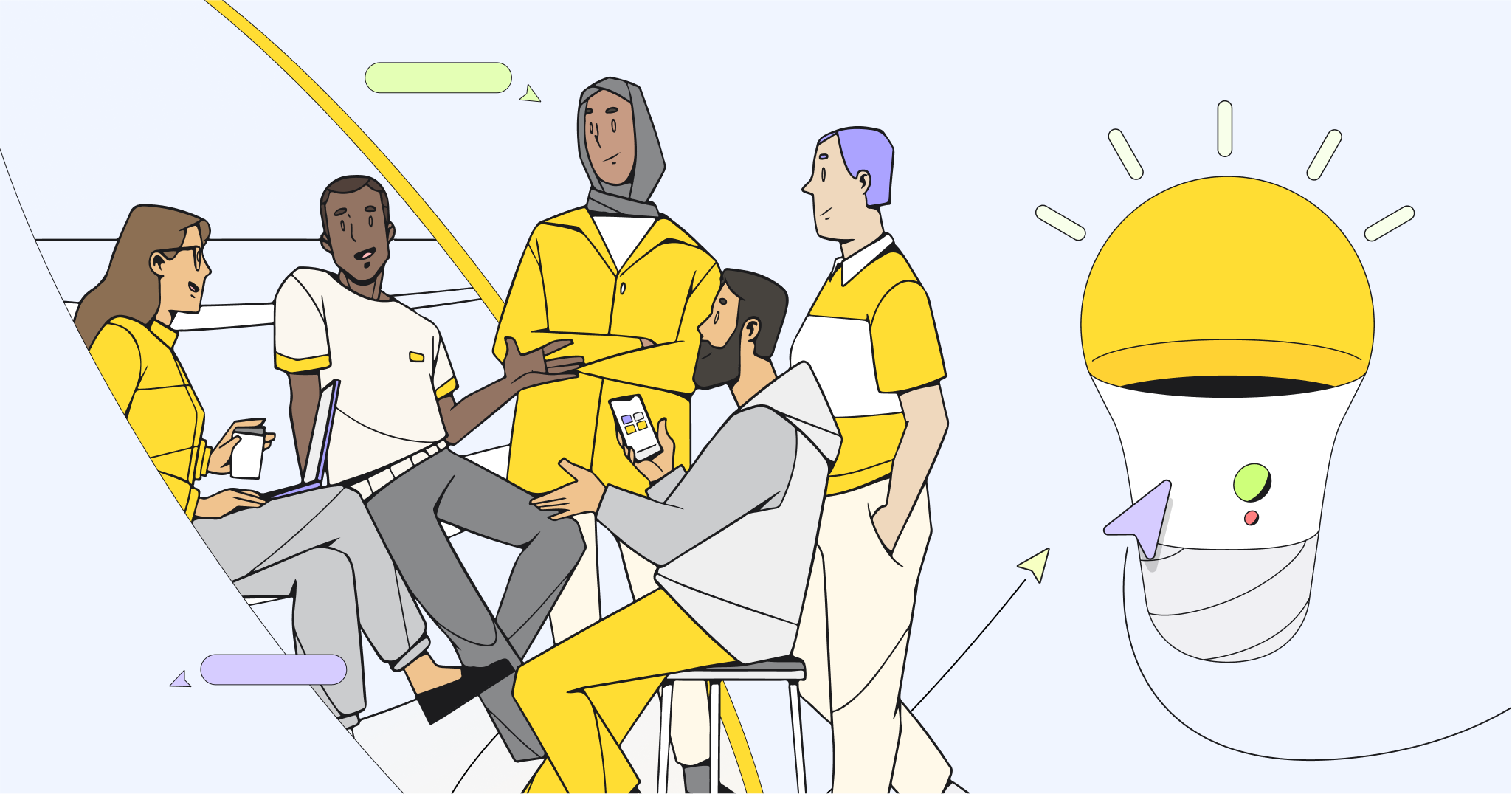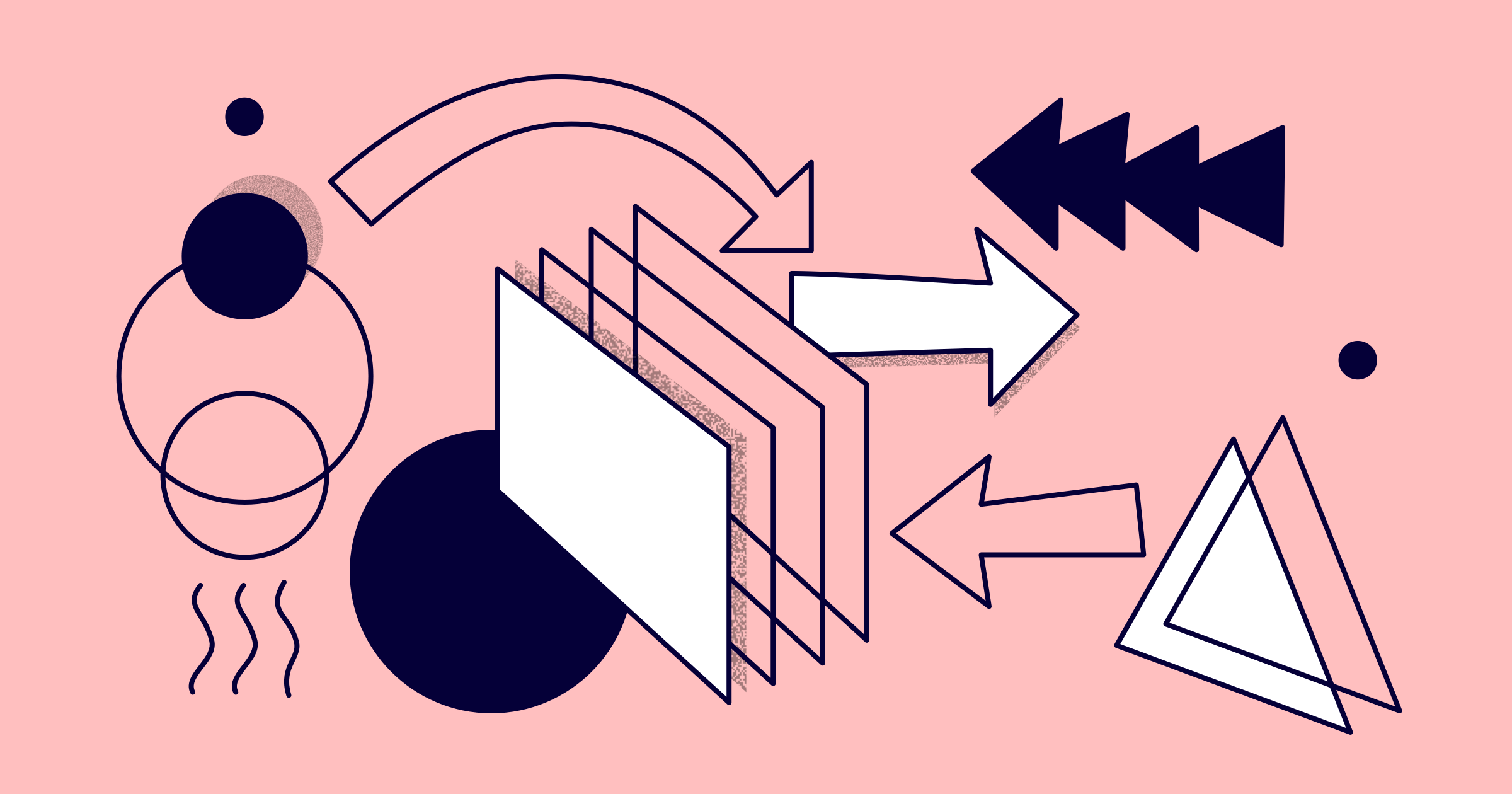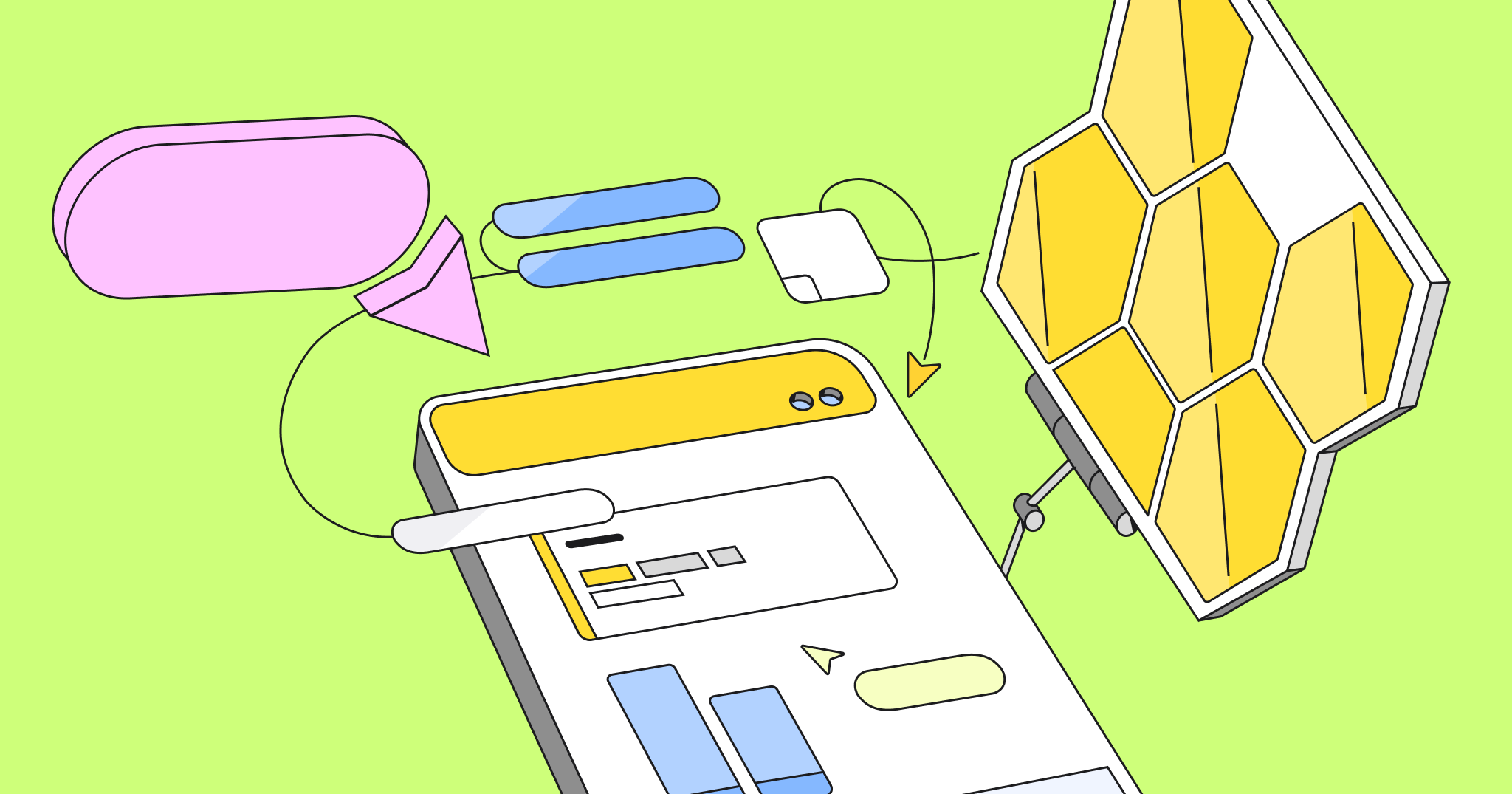When I first joined Miro in 2020, we had 3 million users and around 300 employees. A lot has changed since then. We have since grown to over 50 million users and approximately 1,800 employees, making Miro one of the fastest-growing B2B startups in history.
With such hyper-growth, there’s an ever-growing need to scale the way we do product. In this article, I’ll walk through the approach that I introduced at Miro a while ago and is currently at the heart of our product strategy.
The goal of the product alignment approach is to guide structural opportunity discovery, solution discovery, and ensure product collaboration and knowledge sharing in the product org as the company rapidly grows. This approach applies to companies of all sizes. In fact, the earlier a company adopts this approach, the easier it will be to overcome product collaboration and alignment issues arising from its growth.
Product alignment approach
The Product alignment approach consists of a single document called PAD (short for Product Alignment Document) as well as ceremonies that go along with this document as it evolves and goes through different stages.
Product Alignment Document (PAD)
PAD is the artifact where we document the result of the product discovery and impact. PAD consists of the three main pillars listed below. Each part is associated with the stages that the document goes through.
Try Farbod’s product management template
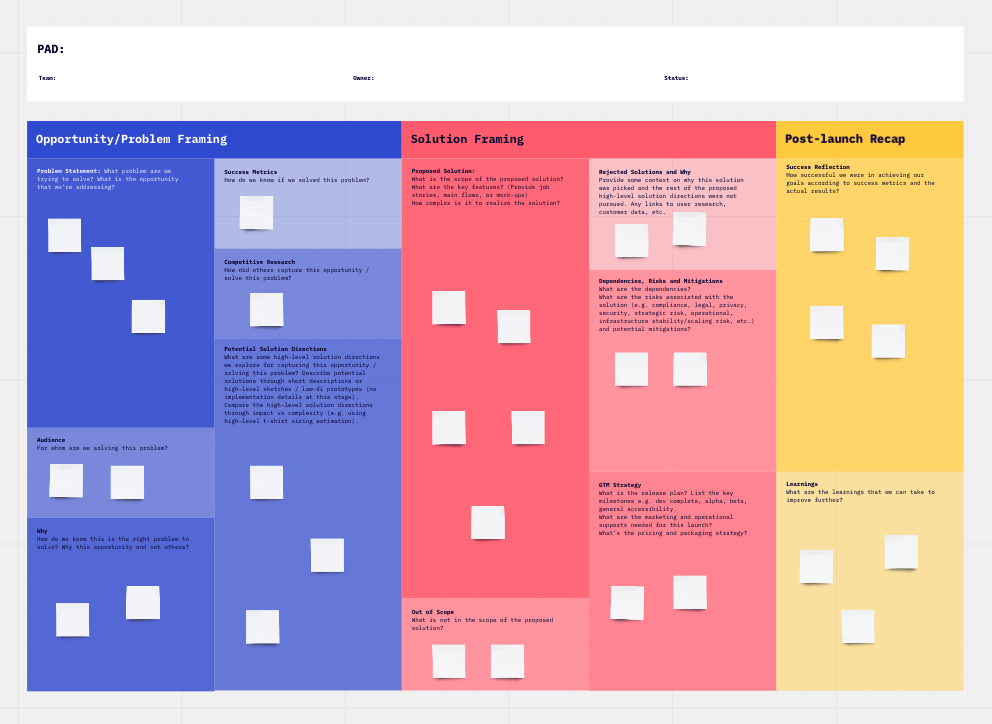
- Opportunity/problem framing: Every product development starts with finding a new opportunity to capture or an existing problem to solve. In this stage, the team explores the opportunity/problem, listing the what, the why (the importance of the opportunity/problem), the target audience, success metrics, and competitive landscape. Within this stage, the team also explores a few potential high-level directions for solving the problem. It’s very important to avoid selecting a specific solution at this stage and remain open-minded to a variety of solutions. The key here is to stay high-level and avoid getting into the solution design and implementation details.
- Solution framing: During solution framing, the team decides which direction to pursue. In this stage, the team works on the solution discovery, designers create the key flows, engineers craft design docs, go-to-market teams prepare the go-to-market plan, and the product manager facilitates the team’s collaboration and guides them toward the right direction. It’s also important to list any potential risks or dependencies involved in launching the proposed solution.
- Post-launch recap: Once the solution is implemented and launched, the team assesses whether they achieved success and reflects on any learnings that they can take to improve further.
Product alignment meeting
PAD content is not something new. All great product teams perform detailed product discovery in one way or another. What is equally important to crafting a PAD is having a relevant audience who reviews your PAD to challenge you and provide feedback.
At Miro, we hold weekly product alignment meetings where teams present their problem framing, solution framing, or post-launch recap stages of PADs to be challenged, receive feedback, exchange knowledge, and ensure buy-in from the leadership team.
Depending on your company’s size, you can either go as broad as inviting the whole product guild and even the leadership team or as narrow as inviting the product people in your product stream. If it’s well-organized, you can easily have up to 20+ people in this meeting and still stay productive.
Advantages of product alignment meetings
- Teams do not waste time on detailed solution discovery for problems or opportunities that are not considered strategic by leadership. They validate the opportunity against both the user need and the business need before investing heavily in it.
- Teams get feedback on the problem/opportunity they are aiming to solve and their approach to tackle them. This feedback comes from leadership and product peers working on other areas of product and have an outside/new perspective than those on the team.
- Everyone stays informed and up to date on the most important product decisions and the why behind them.
- Teams feel more accountable for proper problem/opportunity/solution discoveries before jumping into solving the most attractive problem with the most obvious solution.
- Teams improve their presentation and storytelling skills.
- The whole product org strengthens their product management muscles as they expose the many product challenges other teams face and the approaches they are taking to solve them.
How we run product alignment meetings at Miro
This meeting takes place weekly at Miro, and each team who has something to present will add their topic to the agenda and specify whether they need a problem framing or solution framing review. Each team summarizes their PAD in a couple of slides (in Miro) to present for less than 30 minutes, including Q&A.
Every product alignment meeting at Miro includes 10+ PMs, the product leadership team, and the CEO. Yes, our CEO attends almost every product alignment session as it helps him stay on top of where the product is moving.
There are four classes of possible outcomes coming from the leadership/relevant sponsors for each team who present:
- Looks great, please proceed.
- Approved, please account for recommended course corrections.
- Directionally OK, but please follow up offline before proceeding.
- Not approved, additional work required.
At the end of every quarter, we have a big post-launch recap session where teams share the outcomes for their PADs. They also share any learnings which might be insightful for the whole product guild.

